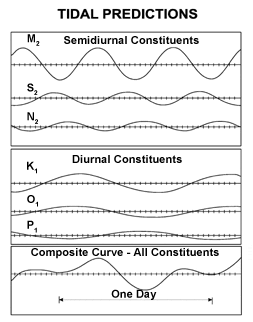- #1
KurtLudwig
Gold Member
- 144
- 30
Please explain high tide at antipodal side as described in Wikipedia https://en.wikipedia.org/wiki/Tide diagram.
At the sublunar side of the earth, sea water is attracted by the moon causing a high tide. On the antipodal side of the Earth sea water is also attracted, somewhat less since the antipodal side is further away from the moon. There should be a trough at the antipodal side, but it is shown as a high tide. There is also a daily high tide due to the sun, but at a lower amplitude. If there were two high tides due to the moon and two lower high tides due to the sun, then there would be four high tides per day, which is not correct.
At the sublunar side of the earth, sea water is attracted by the moon causing a high tide. On the antipodal side of the Earth sea water is also attracted, somewhat less since the antipodal side is further away from the moon. There should be a trough at the antipodal side, but it is shown as a high tide. There is also a daily high tide due to the sun, but at a lower amplitude. If there were two high tides due to the moon and two lower high tides due to the sun, then there would be four high tides per day, which is not correct.




